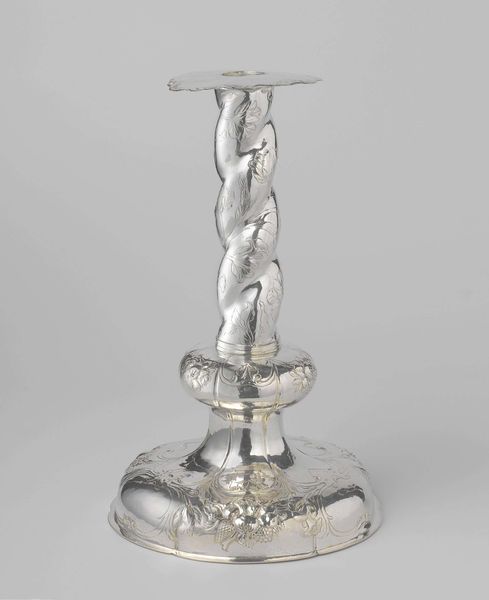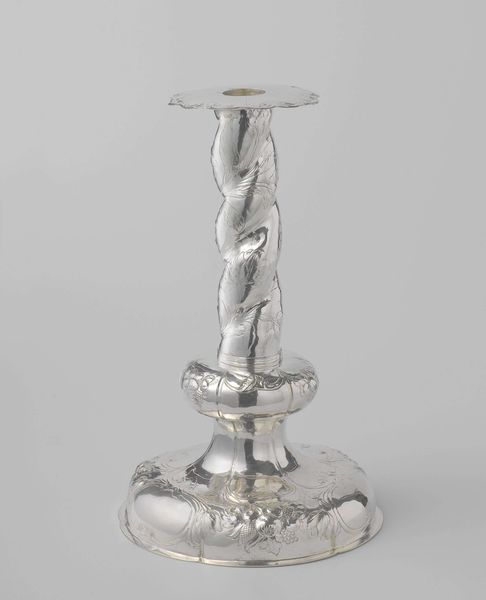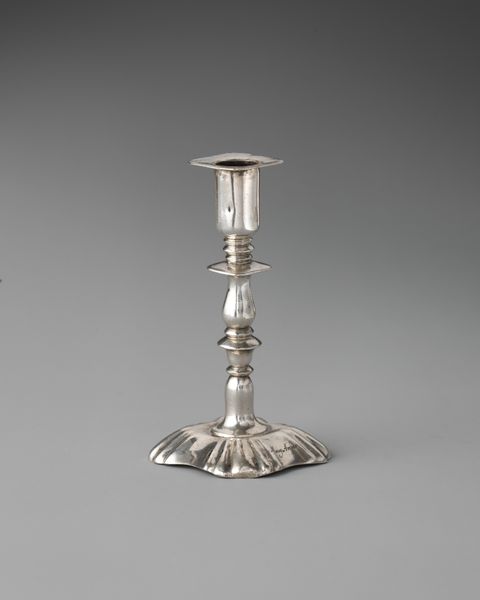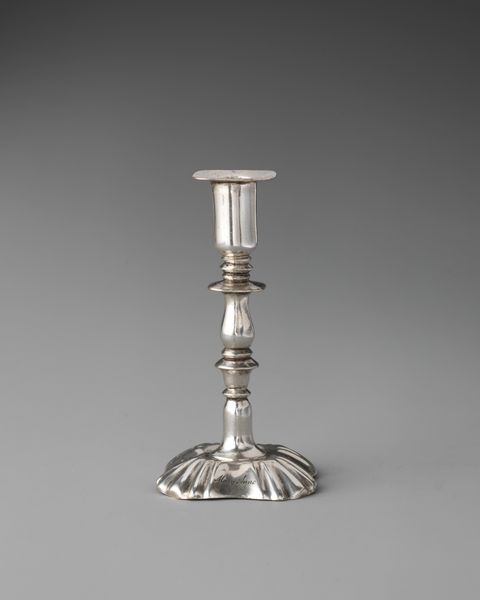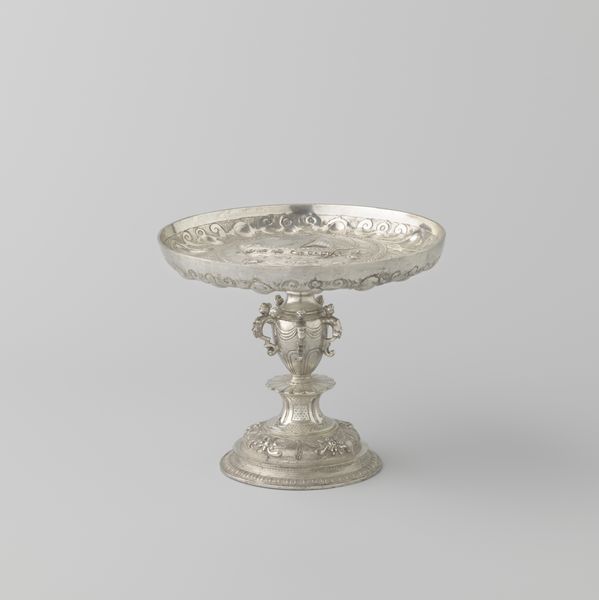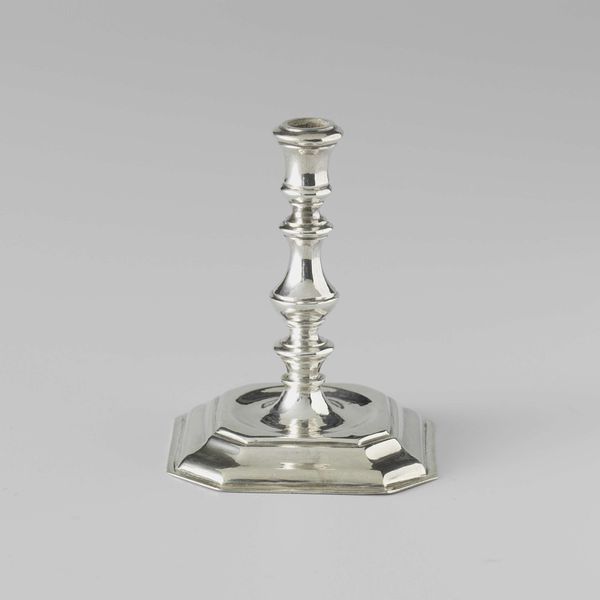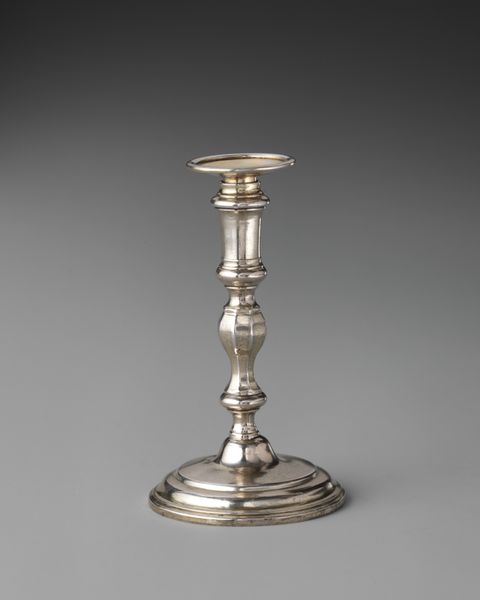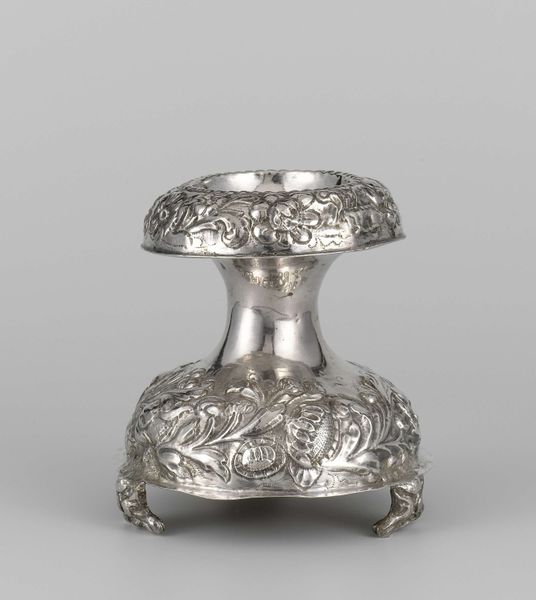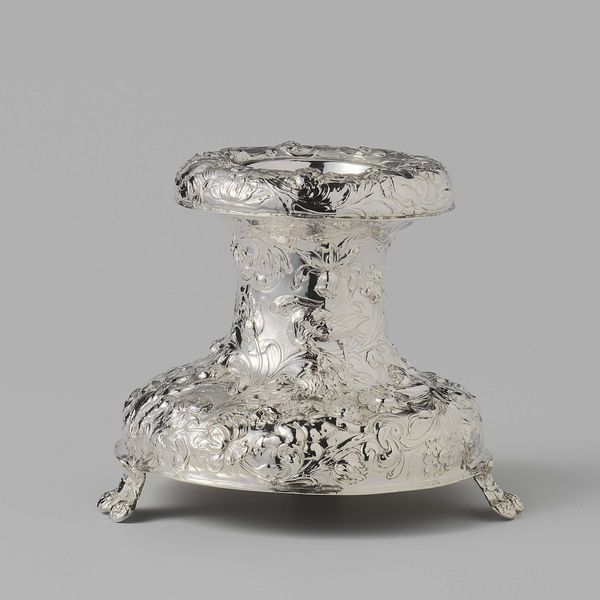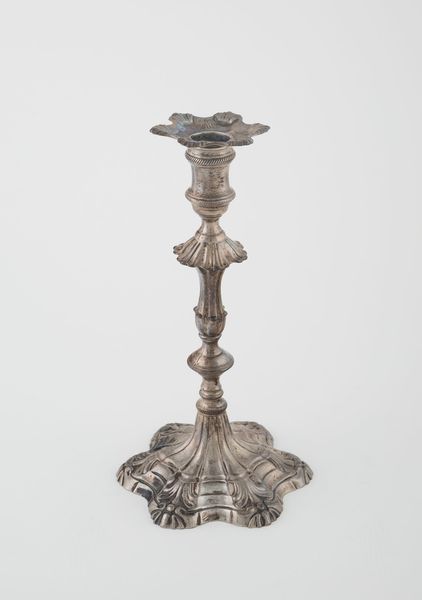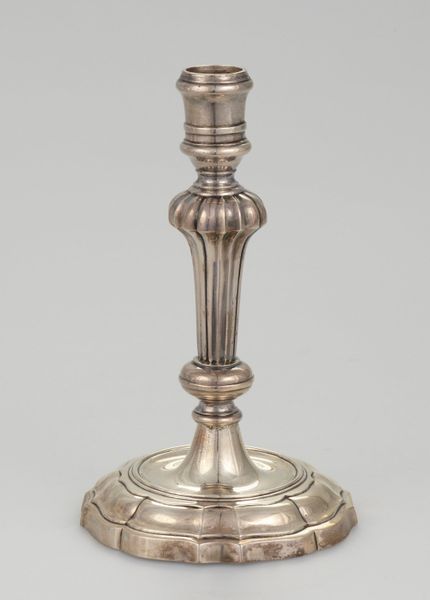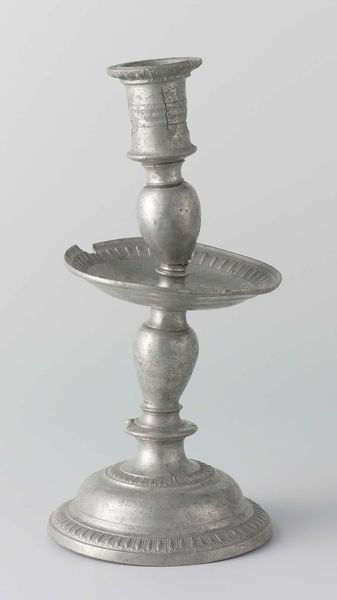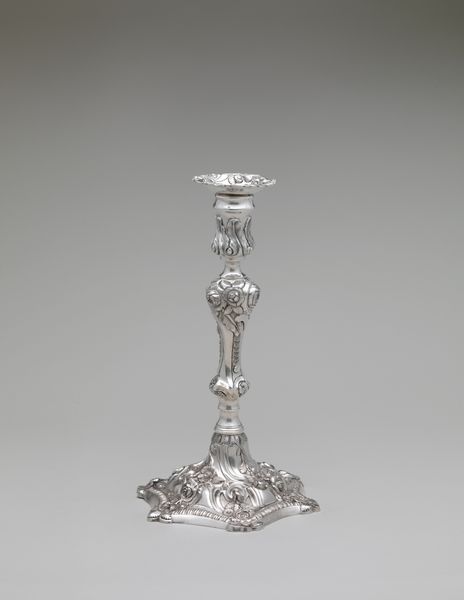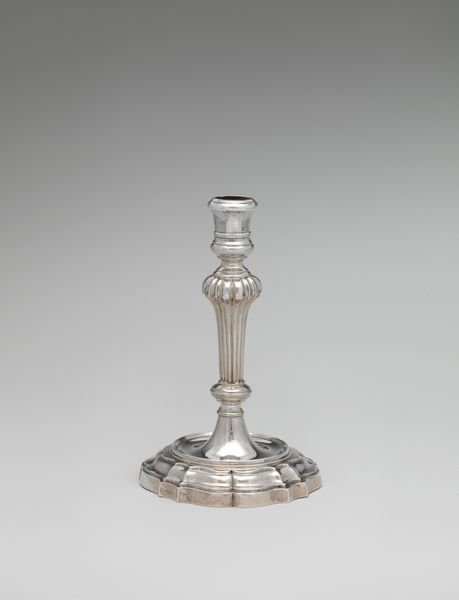
Galvanoplastische reproductie van een kandelaar met gedraaide stam met mythologische voorstellingen uit de Popta-schat 1881
0:00
0:00
elkingtonco
Rijksmuseum
metal, sculpture
#
3d sculpting
#
3d model
#
3d image
#
3d printed part
#
rounded shape
#
metal
#
plastic material rendering
#
jewelry design
#
virtual 3d design
#
3d shape
#
geometric
#
sculpture
#
metallic object render
#
decorative-art
Dimensions: height 32.0 cm, diameter 20.0 cm, weight 1119 gr
Copyright: Rijks Museum: Open Domain
This is a reproduction of a candlestick with mythological representations from the Popta Treasure, made by Elkington & Co. The Popta Treasure refers to a collection of 18th-century silver pieces which were discovered in the Dutch province of Friesland. The original candlestick dates from around 1700. Elkington & Co. were renowned for their electrotyping process which allowed them to make faithful reproductions of historical objects. The twists of its stem, and the scenes from classical mythology call to mind a nostalgia for classical antiquity, a common theme in the art of the 18th century. However, what does it mean to reproduce this object in the 19th century? Does the reproduction allow for wider access to cultural heritage? Or does it reinforce existing power dynamics, where some are able to own or reproduce objects, while others are excluded? Consider the candlestick as not just a decorative object, but also as a reflection of a specific moment in the history of collecting, reproduction, and cultural identity.
Comments
No comments
Be the first to comment and join the conversation on the ultimate creative platform.
